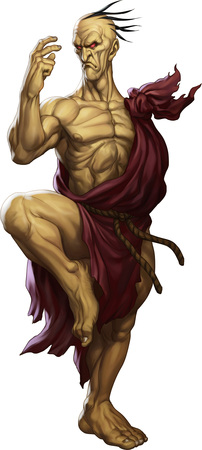
Originally Posted by
WC1277

We don't force our elbow in, like it appears VT and some others do, and a lot of it depends on the body profile of the individual as well. We practice it in a natural position where muscle tension is neutralized.
A good way to test natural position is to have your arm at your side, and with avoiding raising your shoulder and twisting the body, reach out to a full extend and grab or touch something on your center line. Now keeping the same pathway retreat your hand to the wu sao position. This is the "outside elbow line" position. Now from this position rotate to tan sau. You will notice that your elbow rotates inward. This is the "inside elbow line". If you do it this way you will notice that in Sil Lum Tao the fok sau is on what is the "middle/neutral elbow line". This is the line that we place our forward hand in the WC guard position on.
What this "natural" positioning does is allow you to, not only have a wider "shield" so to speak, but these elbow lines are really the bread and butter of good WC. If you noticed, when transitioning from wu sao to tan sau there's a spiraling motion involved. That motion is involved in every WC transition if you treat your elbow this way and is the basis of the "cutting edge" concept which is a whole nother topic in and of it self. This unified spiraling motion between the elbow and the hand is naturally the most efficient way to dissipate force. Combine it with the "bracing" footwork concept and you have the strongest example of structure available to dissipate force. This structure isn't unique to WC by the way and is found throughout nature and industry.
Anyway, by developing that type of structure, it becomes very easy for one to translate it even when the elbow may rise in a conflict against a non WC person.



 Reply With Quote
Reply With Quote





